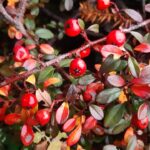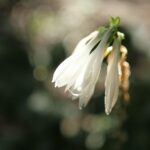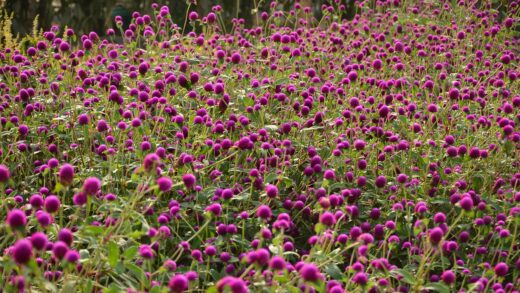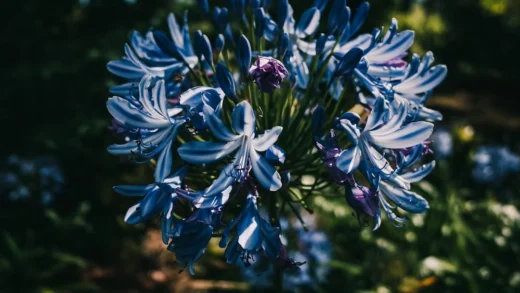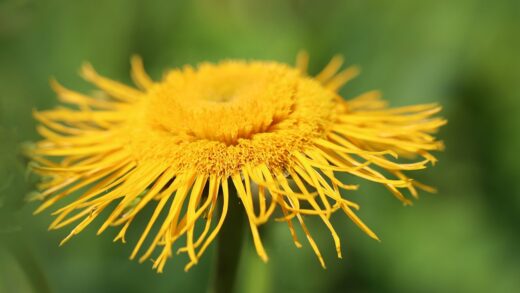Understanding the water requirements and mastering the irrigation of garlic is fundamental to achieving a successful harvest of large, flavourful bulbs. Garlic’s need for water is not static; it fluctuates significantly throughout its long growing season, demanding a responsive and observant approach from the cultivator. Too little water, especially during the critical bulbing phase, can lead to stunted growth and small, disappointing bulbs. Conversely, an excess of water is equally detrimental, creating an environment that encourages devastating fungal diseases like root rot and diminishing the storage quality of the mature bulbs. Therefore, the goal is not simply to provide water, but to maintain optimal soil moisture, creating a delicate balance that supports vigorous growth while safeguarding the health of the plant.
The relationship between garlic and water begins the moment a clove is planted. An initial, thorough watering is essential to settle the soil around the clove and to provide the necessary moisture to trigger root development. Throughout the autumn and the dormant winter period, the goal is to keep the soil lightly moist but never saturated. In many climates, natural precipitation is sufficient to meet this need. However, during dry spells, supplemental watering may be required to prevent the developing root system from desiccating, ensuring the plant is well-established and ready for explosive growth when spring arrives.
As temperatures rise in the spring, the garlic plant enters a phase of rapid vegetative growth, producing a lush canopy of green leaves. This is a period of increasing water demand, as the foliage requires significant moisture to support photosynthesis and build the energy reserves needed for the later stages of development. The soil should be kept consistently moist during this time, not allowing it to dry out completely between waterings. This consistent moisture supports the development of a large, healthy plant, which is a direct prerequisite for forming a large bulb; the size of the bulb is directly proportional to the size of the plant that creates it.
The most critical period for irrigation is during the bulbing phase, which typically occurs in late spring and early summer. This is when the plant begins to divert its energy from leaf production to forming the underground bulb. A steady and ample supply of water is absolutely crucial during this window. Any period of drought stress at this stage will immediately and irreversibly limit the final size of the bulbs. It is during this time that growers must be most vigilant, ensuring the soil remains evenly moist to support the rapid swelling and division of the cloves within the bulb.
Understanding the growth stages and water needs
The life cycle of garlic can be broken down into several distinct stages, each with its own specific water requirements. The first stage is establishment, which occurs in the autumn after planting. During this phase, the primary goal is to encourage the development of a strong root system. The soil needs to be kept consistently moist to support this root growth, but because the plant has no foliage yet and the weather is cool, its overall water usage is relatively low. Overwatering at this stage is a common mistake and can lead to the clove rotting before it has a chance to sprout.
More articles on this topic
The second stage is vegetative growth, which begins in earnest in the spring. As the days lengthen and temperatures warm, the garlic plant focuses all its energy on producing leaves. Each leaf corresponds to a potential layer of paper wrapping around the bulb, and the overall size of the leafy top directly influences the potential size of the bulb. Water is a key component of this growth, fueling photosynthesis and cell expansion. As the plant grows larger, its rate of transpiration increases, and consequently, its demand for water rises steadily throughout this phase.
The third and most critical stage for irrigation is the bulbing phase. This is the transition period when the plant shifts its focus from growing leaves to swelling the underground bulb. This stage requires the most consistent and highest amount of water. Any water stress during this period will directly impact cell division and expansion within the bulb, resulting in smaller cloves and a reduced overall yield. The goal is to keep the root zone consistently moist, never allowing the soil to completely dry out, to provide the plant with the resources it needs for this energy-intensive process.
The final stage is maturation and dry-down, which occurs in the last few weeks before harvest. In a crucial reversal, it is essential to significantly reduce and then completely stop watering during this period. This signals the plant to stop growing and to start curing. Allowing the soil to dry out helps the bulb to form the tight, dry, papery skins that are essential for long-term storage. Continuing to water too close to harvest can lead to bulbs that are prone to rot, staining, and a shortened shelf life.
Irrigation methods and best practices
Choosing the right irrigation method can greatly enhance water efficiency and reduce the risk of disease. Overhead watering with sprinklers is generally discouraged for garlic. This method wets the foliage, which can create a humid microclimate around the plants, making them much more susceptible to fungal diseases like rust and downy mildew. Furthermore, a significant amount of water can be lost to evaporation before it even reaches the soil, especially on warm or windy days, making it an inefficient choice.
More articles on this topic
Drip irrigation and soaker hoses are widely considered the best methods for watering garlic. These systems deliver water slowly and directly to the soil surface at the base of the plants. This approach has several distinct advantages. It ensures that the water penetrates deeply into the root zone where it is needed most, it minimizes water loss to evaporation, and most importantly, it keeps the leaves and stems dry, drastically reducing the incidence of foliar diseases. A well-designed drip system can provide a precise and uniform application of water across the entire garlic patch.
The principle of deep and infrequent watering is a cornerstone of best practice for garlic irrigation. Instead of providing a small amount of water every day, it is far more effective to give the plants a thorough soaking once or twice a week, depending on the weather and soil type. This encourages the roots to grow deeper in search of water, creating a more resilient and drought-tolerant plant. Shallow, frequent watering, in contrast, promotes a shallow root system that is more vulnerable to drying out during hot spells.
Monitoring soil moisture is more of an art than a science and is superior to watering on a fixed schedule. The simplest method is to use your finger or a hand trowel to check the soil moisture two to three inches below the surface. If the soil at this depth feels dry to the touch, it is time to water. For a more technological approach, a soil moisture meter can provide a quantitative reading. By regularly checking the soil, you can tailor your irrigation practices to the real-time needs of the crop and the prevailing weather conditions, ensuring optimal moisture levels at all times.
Recognizing signs of overwatering and underwatering
Recognizing the visual cues of improper watering is a critical skill for any garlic grower. Underwatering, or drought stress, often manifests first as a slight wilting of the leaves during the hottest part of the day. The leaves may also take on a bluish-green or greyish tint, and the tips may begin to turn yellow or brown and feel dry and brittle. If the water deficit continues, overall plant growth will be stunted, and the development of the bulb will be severely compromised, resulting in a harvest of small, underdeveloped bulbs.
Conversely, the signs of overwatering can be more insidious and often more damaging. The most common symptom is a yellowing of the leaves, starting with the lower, older ones and progressing up the plant. This is often mistaken for a nitrogen deficiency, but in the case of overwatering, it is caused by the roots being deprived of oxygen in the waterlogged soil. The soil around the base of the plant may appear constantly damp or even have standing water, and it might emit a sour or rotten smell, which is a clear indicator of anaerobic conditions.
The consequences of prolonged overwatering are severe. The oxygen-starved roots will begin to rot, losing their ability to absorb water and nutrients, which ironically can lead to wilting, mimicking the symptoms of underwatering. This root rot creates an entry point for various fungal and bacterial pathogens that can quickly spread to the bulb itself. An overwatered bulb will be soft, mushy, and prone to decay both in the ground and after harvest, rendering it completely unusable and significantly reducing its storage potential.
Differentiating between the symptoms of under- and overwatering ultimately comes down to examining the soil. If the leaves are yellow and wilting, but the soil is bone dry, the problem is a lack of water. If the leaves are yellow and wilting, but the soil is soggy and saturated, the problem is an excess of water. Correctly diagnosing the issue is the first step toward remediation. For underwatered plants, a deep, slow watering is the solution, while for overwatered plants, irrigation must be stopped immediately to allow the soil to dry out and recover.
The importance of the dry-down period
The dry-down period is a specific and intentional phase of managed water deprivation that occurs in the final weeks leading up to harvest. This is not a period of neglect but rather a crucial agricultural practice that significantly influences the quality and storability of the garlic bulbs. The primary purpose of ceasing irrigation is to signal to the plant that its growth cycle is complete and that it should direct its remaining energy into maturing the bulb and preparing for dormancy. This physiological shift is essential for developing the characteristics needed for long-term storage.
When the soil is allowed to dry out, the garlic bulb begins the curing process while it is still in the ground. The plant draws moisture and nutrients from its leaves and transfers them down into the bulb, which contributes to its final size and density. More importantly, the drying soil encourages the formation of the multiple layers of tight, papery skin, or wrappers, around the bulb. These wrappers are not merely for aesthetics; they form a protective barrier that shields the cloves from physical damage and prevents the entry of bacteria and fungi during storage.
Timing the start of the dry-down period is key. It should typically begin when the plant has started to show the first signs of natural senescence, usually when the bottom two or three leaves have turned yellow or brown. This generally corresponds to about two to four weeks before the target harvest date. Stopping the water too early can prematurely halt the bulbing process, resulting in smaller bulbs. Conversely, continuing to water too close to harvest can lead to waterlogged bulbs with loose, weak wrappers that are highly susceptible to mold and rot.
During the dry-down period, the soil should become progressively drier until it is quite dry at the time of harvest. This not only improves the quality of the bulb but also makes the harvesting process cleaner and easier, as there will be less mud clinging to the bulbs and roots. By carefully managing this final phase of the watering cycle, a grower can ensure that their well-tended garlic crop is not compromised at the last minute, resulting in firm, flavourful bulbs that will store successfully for many months.









